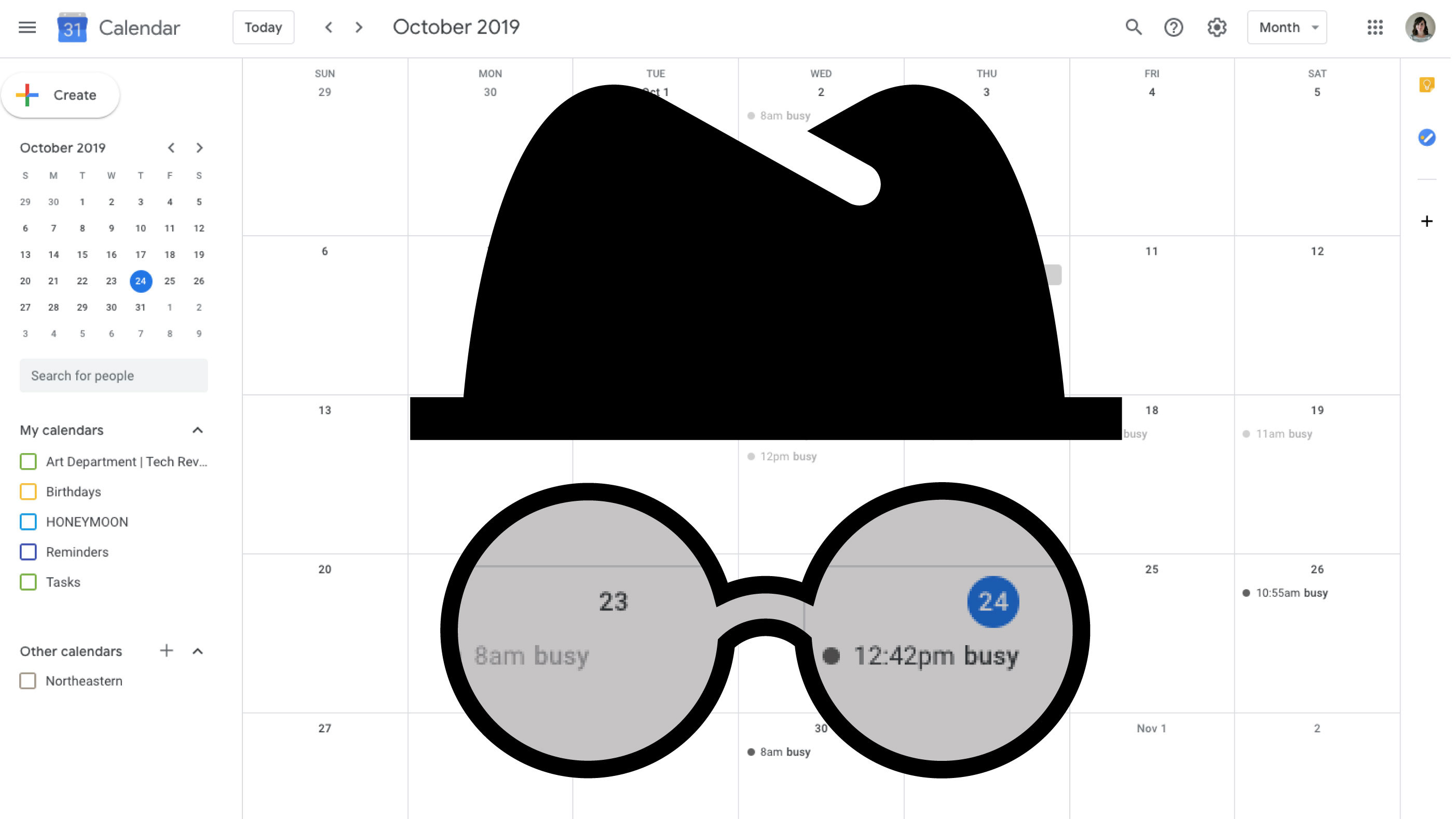Employees say Google is trying to spy on them. That’ll be hard to prove.

A mundane calendar tool is at the center of a new controversy over Google’s power. Some Google employees think the internal tool—a browser extension that “would automatically report staffers who create a calendar event with more than 10 rooms or 100 participants,” according to a memo obtained by Bloomberg—is a way for the company to spy on worker attempts to organize. Google insists it’s just a polite reminder not to spam coworkers with event invites.
The dispute is a sign of the level of distrust within Google after a year of walkouts and protests over everything from sexual harassment to military partnerships. But it’s also an example of how workplace technology can complicate norms and regulations created in the pre-internet era.
Worker organizing can mean a lot of things. If Google were spying on actual attempts to unionize, that would be illegal, according to the National Labor Relations Act (NLRA). The question is, what counts as spying? The NLRA defines it as the company doing something “out of the ordinary” to keep track of union activity. That was an easier test to apply when spying meant a manager lurking outside a possible union meeting. It gets harder when electronic workplace surveillance has become so common.
Employers can, and do, track everything from emails, chats, and calendars to Wi-Fi usage and tone of voice, all in the name of improving their workers’ performance. In one memorable incident reported by the Wall Street Journal, a company that tracked which songs an employee listened to and which Facebook pages she visited figured out that she was sad, called her mom, and found out that she had recently been through a breakup. (The employee told the Journal that the whole event was “a little embarrassing.”)
And if checking which Facebook pages an employee is visiting is business as usual, a calendar tool isn't necessarily “out of the ordinary”—even if it just so happens to help higher-ups figure out whether there’s unionizing going on. The calendar tool would violate the NLRA if someone could prove that Google installed it only because the company got wind of a union campaign. But doing so can be hard because surveillance systems so often have multiple uses, says Data & Society labor researcher Aiha Nguyen. They can be simultaneously used for alerting people to meetings and for keeping an eye on worker dissent.
A lesser-known, and even more interesting, part of the NLRA is that it’s illegal even to give workers the impression that an employer is spying on union activity. In one case from last year, a manager at a Napleton Cadillac car dealership mentioned to another employee that he knew which of the workers was the union organizer. Since the employees had never talked to management about unionizing, the obvious conclusion was that he’d been spying on them. The National Labor Relations Board (NLRB) ended up ruling that the dealership had violated this part of labor law, among others.
The “impression” requirement gives employees some powerful leverage. Various NLRB rulings confirm that an impression of spying is created if “under all the relevant circumstances, reasonable employees would assume from the statement in question that their union or other protected activities had been placed under surveillance." That made sense in the Napleton case, but what about a calendar extension? “Statements” don’t have to be vocal, says Lisa Milam, senior legal analyst at Employment Law Daily. It can mean sending a sudden email reminder that workplace messages are not private, or a director showing up to a worksite out of the blue.
Still, it may be easier to prove that a manager talking about unionizing has created the impression of spying than to prove that a calendar tool has done the same, even if the employees' suspicions have merit. And Google certainly has given employees plenty of reasons to be cautious. Google wanted to prohibit workers from organizing walkouts via company email, and employee organizers said they have faced retaliation. Google may also be spooked after its contractors in Pittsburgh voted to unionize last month. Just this week, Google Zurich tried to shut down a unionization meeting. (That said, if Google really is spying on employees, this extension is the dumbest way imaginable. No union organizer would use work calendars to set up meetings.)
So if Google employees brought a complaint under the NLRA, could they reasonably claim they had an impression of being surveilled for union activity? Probably, at least according to the employees who wrote the memo. But NLRA rules weren’t created in a world where being watched is the default and they might have a harder battle to fight as a result. And at the end of the day, the biggest risk may be that most people never even question the new tracking tools. "Surveillance is more and more common and you wonder if employees are less likely to look at surveillance and think ‘oh, they’re trying to make sure I’m not organizing,’” says Milam. “They just think of it as a commonplace routine thing.”
Update: This story has been updated with commentary from Aiha Nguyen and Lisa Milam.
Deep Dive
Policy
Is there anything more fascinating than a hidden world?
Some hidden worlds--whether in space, deep in the ocean, or in the form of waves or microbes--remain stubbornly unseen. Here's how technology is being used to reveal them.
A brief, weird history of brainwashing
L. Ron Hubbard, Operation Midnight Climax, and stochastic terrorism—the race for mind control changed America forever.
What Luddites can teach us about resisting an automated future
Opposing technology isn’t antithetical to progress.
Africa’s push to regulate AI starts now
AI is expanding across the continent and new policies are taking shape. But poor digital infrastructure and regulatory bottlenecks could slow adoption.
Stay connected
Get the latest updates from
MIT Technology Review
Discover special offers, top stories, upcoming events, and more.